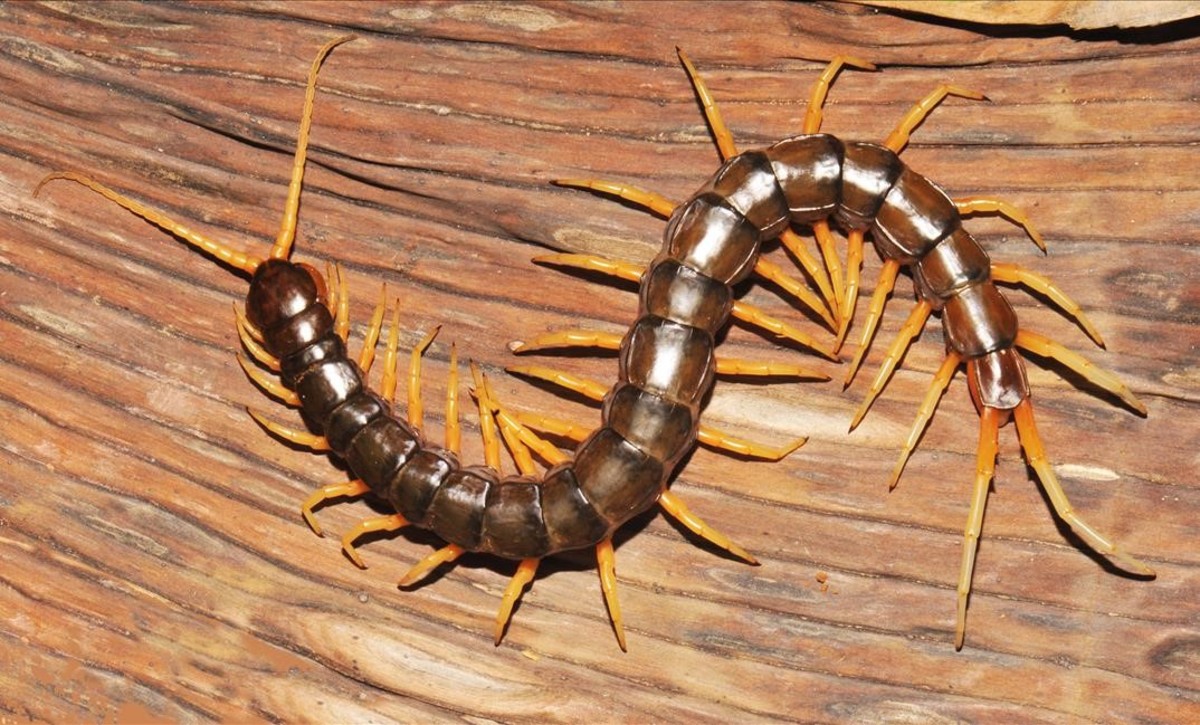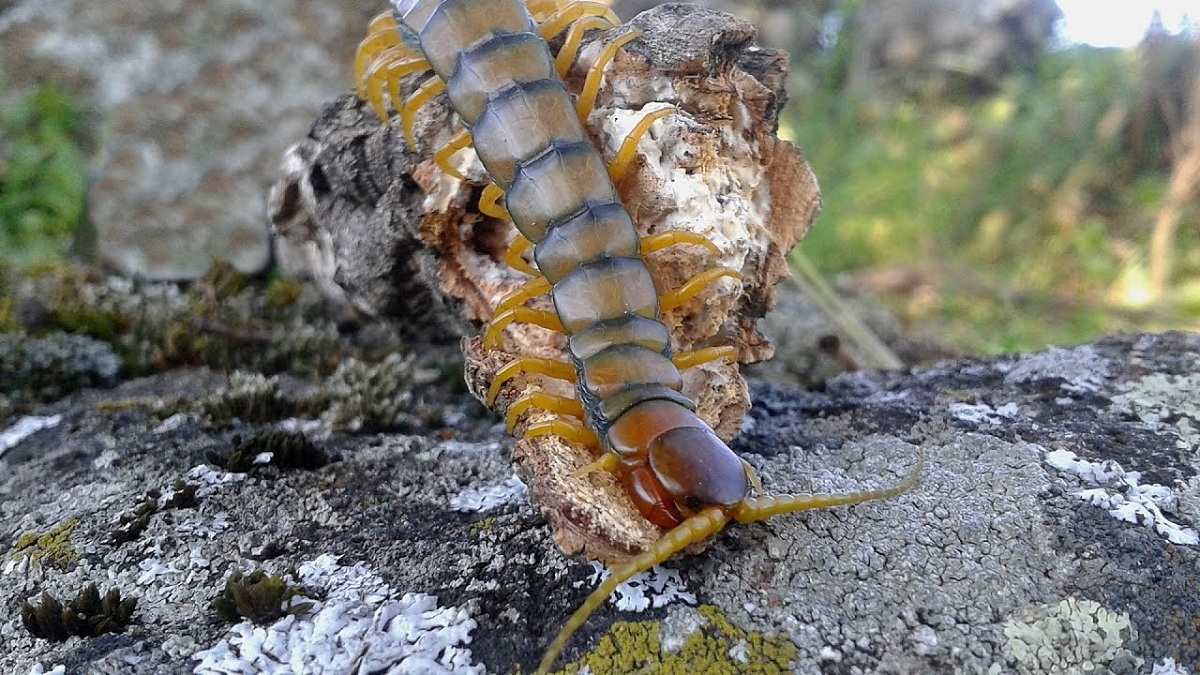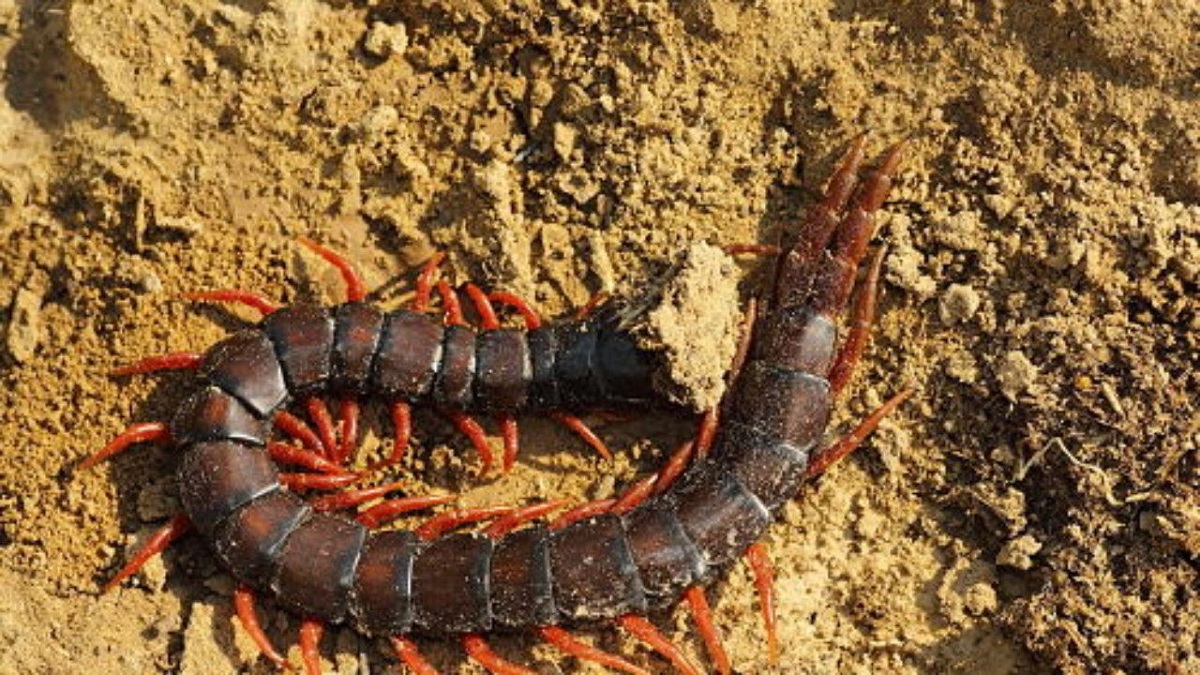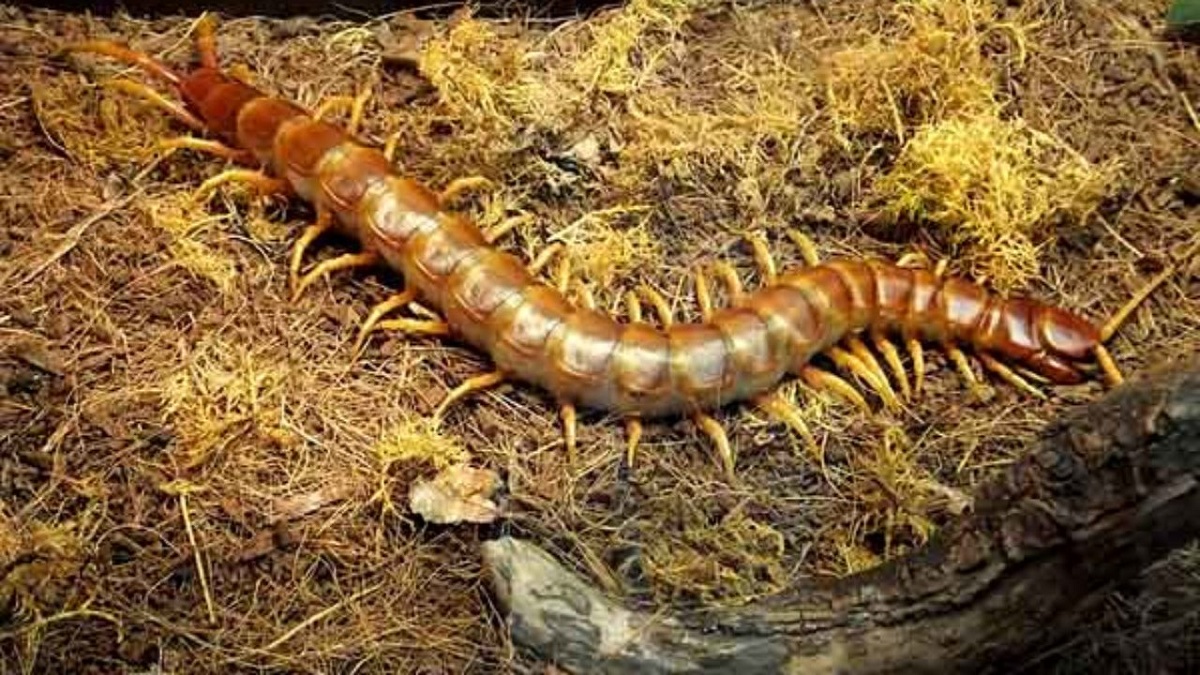
Today we are going to talk about a group of animals that belongs to the phylum of arthropods to the class Chilopods and to the genus of myriapods. It's about the scolopendra. These animals are characterized mainly by having a depressed body on the back ventral part and a pair of antennae. They are organisms of a small size and are known for their fangs to inject venom.
In this article we are going to tell you about all the characteristics, habitat, feeding and reproduction of the scolopendra.
Key features

The scolopendra is a myriapod that is composed of a depression in the ventral dorsum and has a pair of antennae that have between 17 and 30 knuckles. They have between 21 and 23 pairs of legs, among which is modified the first pair as fangs that serve to inject the venom. This pair of fangs are called calipers. They are generally small in size, although they can exceed 30 cm.
They are considered to be jaw arthropods and have jaws with teeth and mushrooms. The feeding process has two pairs of jaws that serve to feed. Its legs are multi-articulated and are only composed of a single branch. The first pair of kicks is modified as poisonous claws used for hunting. On the other hand, the last pair of legs is the one that serves as a sensitive and defensive organ. It is longer than the rest and you do not use it for scrolling.
The size of the scolopendra varies depending on the area where it develops. In Europe, the largest specimen can reach 17 centimeters in length. While the specimens found in the Caribbean islands can double this length. They have a very complete digestive system. This is because they have a digestive system that begins in the mouth and ends in the anus. This is one of the characteristics of the myriapods. The digestive system is made up of the foregut, midgut, and hindgut.
As for the respiratory system, they have a tracheal system. This is common among the Chilopods. In the order of the scolopendras we have respiratory stigmata that are able to communicate with the outside and have the function of being able to breathe. These stigmas have several tubes that run through the body of the animal. These tubes are known by the name of tracheae and are found in the same walls produced by gas exchange.
The nervous system is very primitive since it is of the ganglionic type. These are some changes that are grouped in some areas capable of communicating with the digestive system. They are enervated to a central nervous chain that runs longitudinally throughout the body.
Habitat of the scolopendra

These animals are nocturnal and during the day they usually hide in bushes, rocks, logs, leaves and rock crevices. In order to create a burrow, they build galleries while they are on the ground. This is one of the reasons why these animals prefer areas with high relative humidity. This high relative humidity helps them make the soil texture softer and therefore they can dig more easily.
These animals have a range that is wide from desert areas to coniferous forests. Numerous specimens can be found in flatwood trees. That is, these animals are considered a cosmopolitan species. This means that there are specimens of scolopendra around the world. Most species are found in the tropics. This is due to the fact that in these areas there are quite high relative humidity levels and soft soil texture. The only areas where we cannot find this animal is in the polar areas.
However, there are some species with a more restricted range. There are some species such as the scolopendra pomacea which it is only known in some states of central Mexico. Others have a much wider area of distribution since they can be found practically all over the world.
What does the scolopendra feed on?

These arthropods are carnivorous predatory animals. Its main prey are those smaller insects such as lo they are butterflies, grasshoppers, cockroaches, and beetles and other arthropods such as spiders and scorpions. Although not as frequently, snails and earthworms are also often a part of their diet.
Larger species of scolopendra have a more potent venom and can feed on larger animals. Some of them feed on frogs, lizards, mice, some species of birds, and some species of snakes.
According to scientists, in order to detect the prey they use their antennas. There are other scientists who think that in order to capture the prey they use the last pair of legs that serves as the sensory organ. This pair of kicks is heavily armed with thorns and nails and serves to be able to pull the body and drive the calipers into it in order to paralyze or kill them. Once the scolopendra has captured its prey, it injects the venom into it. But it does not release its prey, but keeps it as long as possible held by its second jaws and calipers. They use the jaws as a whole with the first jaws to be able to manipulate the corpse to ingest it.
Reproduction
These animals have a sexual type reproduction. They are oviparous with a direct development. This means the egg hatches in a way that gives a juvenile with the same characteristics as an adult but as an immature sexual development and with a smaller size. The hatchlings are capable of fending for themselves from the moment they hatch.
Females have a single ovary and it is located in the dorsal area with respect to the digestive tract. Males can present several testicles in the dorsal position and are the ones that shed the gametes in a single spermiduct. The female collects the spermatophore and introduces it into her genital opening to the spermatheca. The female usually deposits about 15 eggs for each laying. It only exercises parental care until hatching.
I hope that with this information you can learn more about escolopendra.
I got a scalopendra in my room I was asleep when I heard a noise on the ceiling, I was only asleep and suddenly I heard a louder noise in the room and I woke up I turned on the light and hid with a giant 40-legged scalopendra which is 45 cm long I HAD TO KILL HER today September 13, 2021 at one in the morning FROM VENEZUELA VILLA DE CURA STATE ARAGUA